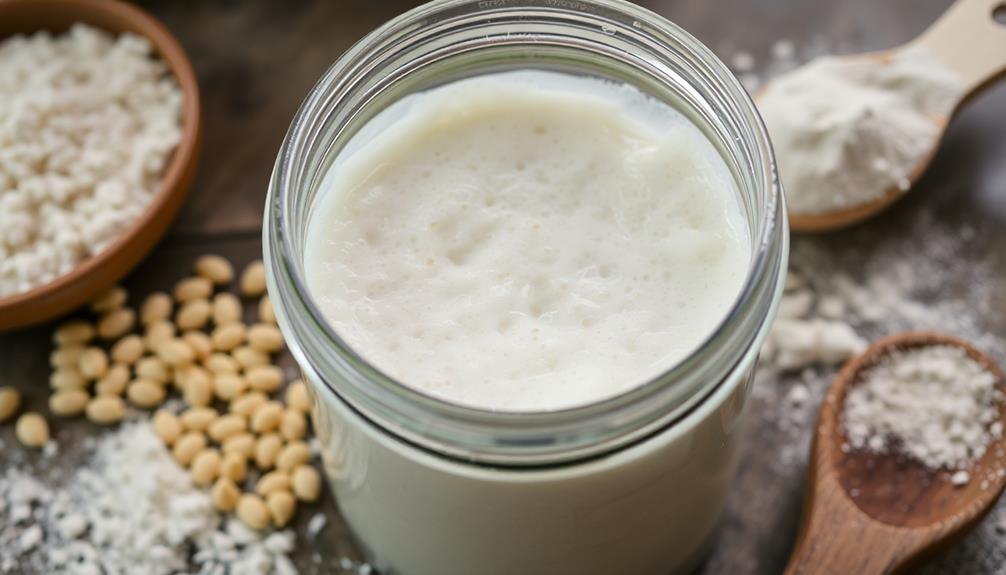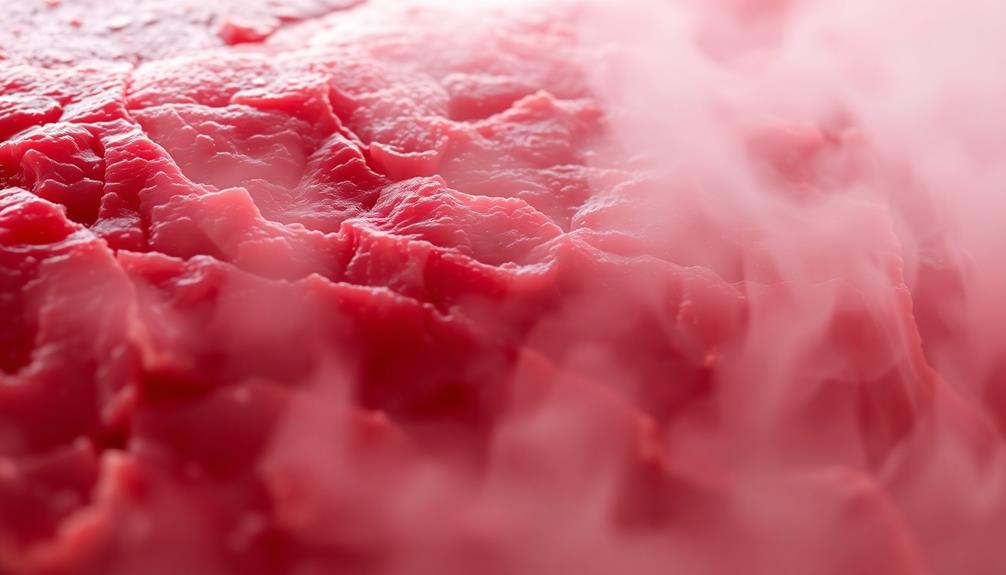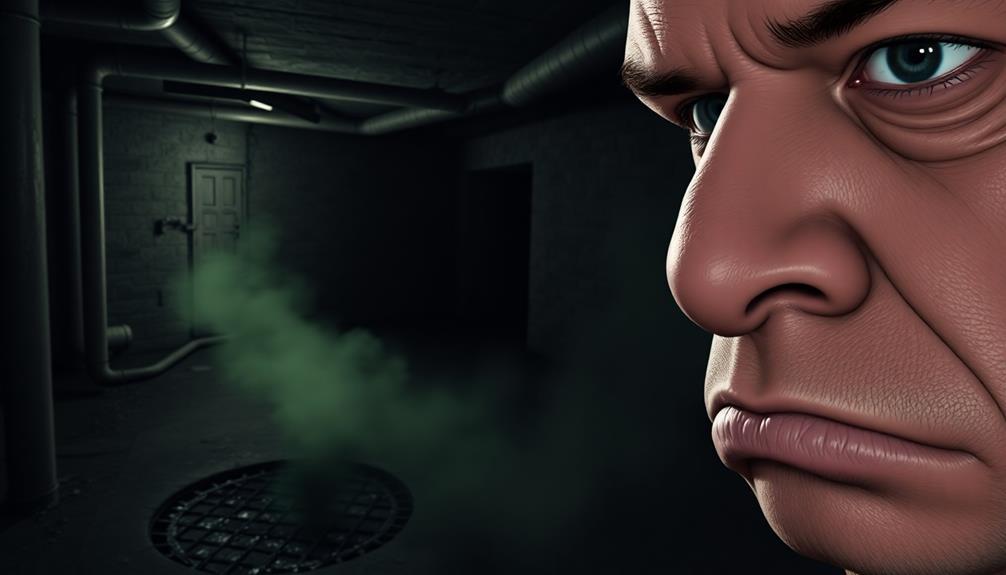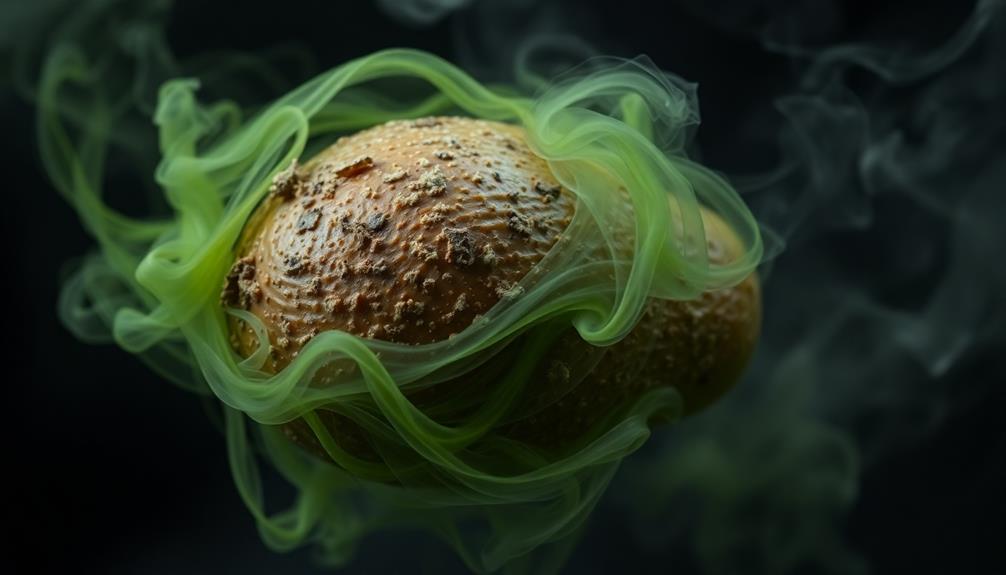Sourdough starter smells amazing! You'll notice a mix of tangy, nutty, and sweet aromas. A sharp, zesty scent means your starter's actively fermenting, while a warm, nutty whiff might remind you of toasted grains. If it smells like ripe fruit, that's a good sign too! But, if you catch a whiff of something funky or a rotten egg smell, it might be time to reassess your feeding schedule. It's all about keeping that healthy balance! With some care, your starter can bring joy and deliciousness to your baking adventures—stick around to learn even more about your sourdough journey!
Key Takeaways
- A healthy sourdough starter emits a mix of tangy, nutty, and sweet aromas, indicating active fermentation.
- The scent can be sharp and zesty, reminiscent of yogurt or beer when the starter is thriving.
- Over-fermentation may produce a pungent smell, suggesting neglect or harmful bacteria presence.
- Whole grain flours create a more robust aroma compared to all-purpose flour due to richer ingredients.
- Environmental factors like temperature and humidity significantly influence the intensity and character of the starter's smell.
Introduction
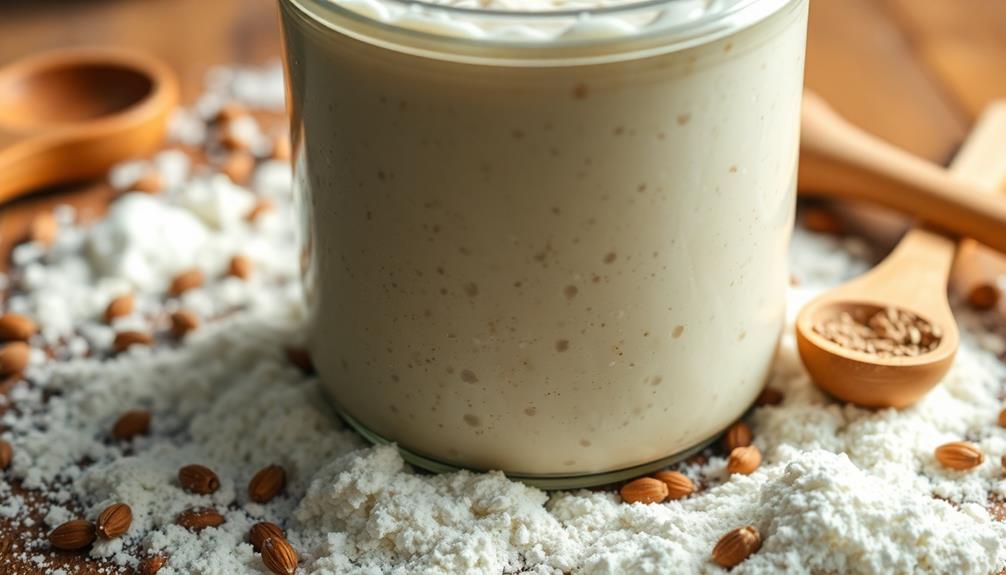
Sourdough starter smell can be a fascinating topic for both novice and experienced bakers. When you first start your sourdough journey, you'll quickly notice that the smell is a key part of the process. It's not just about baking bread; it's an adventure in fermentation, and it all begins with that starter. You might find yourself eagerly sniffing your jar, wondering what's happening inside.
As your starter ferments, it develops a unique aroma that signals its health and readiness. Understanding this smell can help you know when to feed it or when it's time to bake. It's a living culture, and its scent changes as it matures, which can be both exciting and a little confusing. You'll learn to recognize those subtle differences, and trust me, it's a skill worth having.
If you're feeling adventurous, try keeping a journal to note how the scent evolves over time. You might even find yourself laughing at how something so simple can become such a delightful aspect of baking.
Description of the Smell
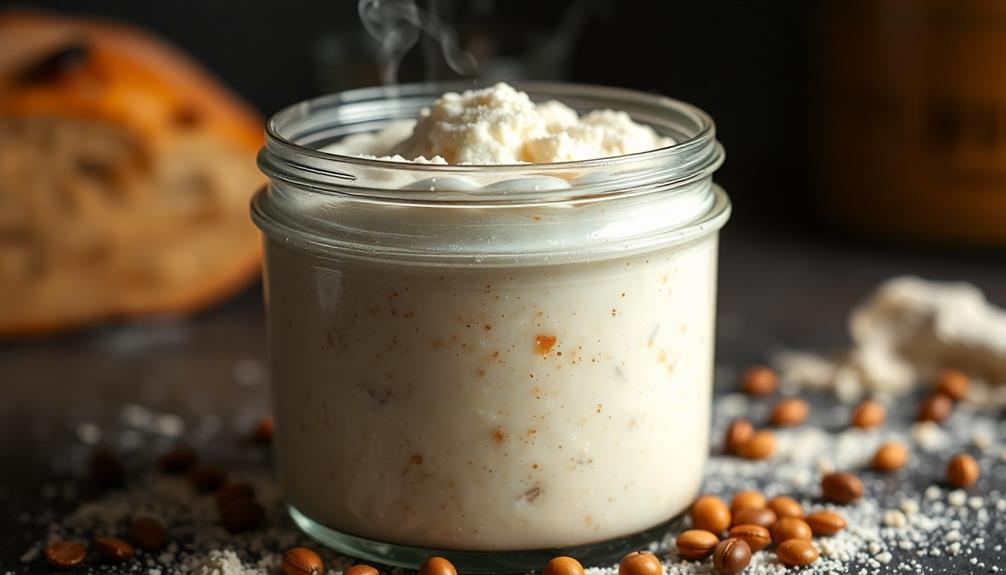
The smell of a healthy sourdough starter is often described as a delightful mix of tangy, nutty, and slightly sweet aromas. When you take a whiff, you might notice a sharp, zesty scent that hints at the fermentation happening inside. This tanginess comes from the natural acids produced by the wild yeast and bacteria thriving in your starter. It almost makes you feel like you're standing in a bakery, doesn't it?
Along with the tang, there's a warm, nutty aroma that brings to mind freshly roasted grains. It's like a cozy hug for your nose!
You may also catch a hint of sweetness, reminiscent of ripe fruit, making the whole experience surprisingly pleasant. If your starter has a more pungent smell, it could mean it's over-fermented or needs a little more TLC.
Source and Composition
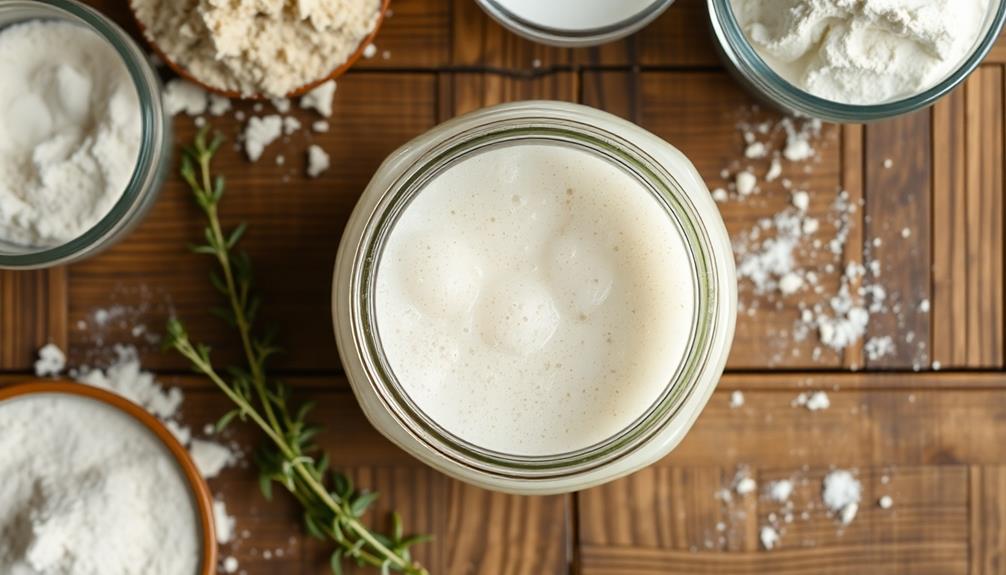
Your sourdough starter's smell originates from a complex interplay of wild yeast and beneficial bacteria. These tiny organisms work together to create the delightful aroma you notice when you open your jar. The wild yeast, which is naturally present in the environment, ferments the sugars in your flour. This process produces carbon dioxide and alcohol, contributing to that unique scent you love.
On the other hand, beneficial bacteria, mainly Lactobacillus, thrive in the same environment. They create lactic acid, which gives your starter a tangy aroma. The balance between these yeasts and bacteria is essential, as it shapes the overall smell. If you ever notice a strong vinegar or off smell, it could mean something's gone awry in this balance.
The temperature and ingredients you use can also influence the aroma. For example, whole grain flours often produce a more robust smell compared to all-purpose flour.
Typical Scenarios or Environments

In various scenarios, the environment where you keep your sourdough starter significantly impacts its smell and overall health.
If you place your starter in a warm, cozy spot, like near a sunny window, it'll likely develop a more tangy aroma. This is because the warmth encourages the yeast and bacteria to thrive, creating that delightful, sour scent you might crave.
On the other hand, if you store it in a chilly corner, it might smell a bit less intense, possibly even a little musty.
Humidity also plays a role. In a damp environment, your starter could take on a slightly funky smell, not the good kind!
To keep things on the right track, aim for a stable temperature, ideally between 70°F and 75°F (21°C and 24°C).
Emotional or Cultural Associations
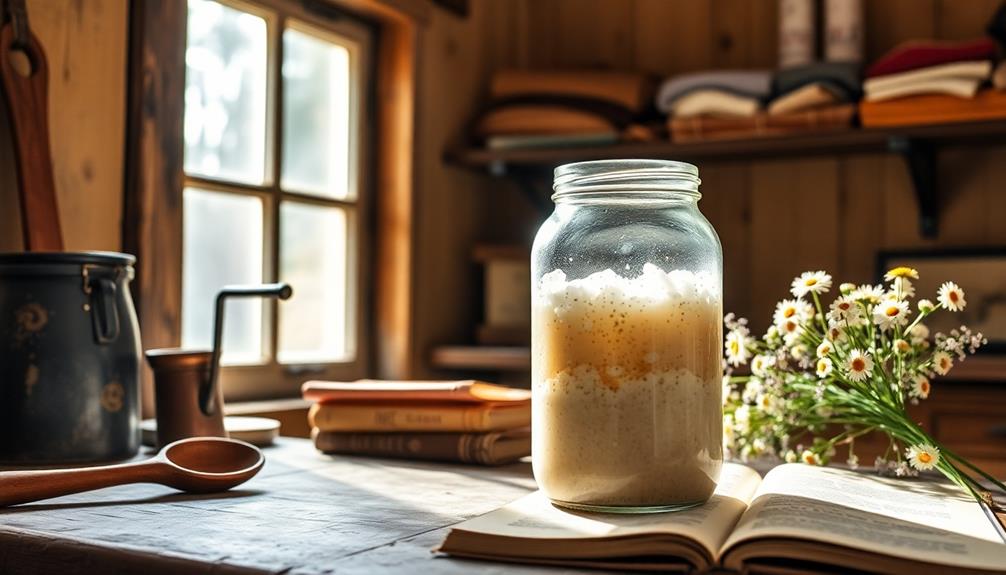
Sourdough starter isn't just a culinary tool; it carries emotional and cultural significance for many people. When you think of that tangy smell wafting from your kitchen, it might remind you of family gatherings or cozy weekends spent baking with loved ones.
For many, making sourdough bread is a cherished tradition that connects generations, passing down recipes and techniques like a family heirloom.
In some cultures, sourdough represents resilience and creativity, as people learned to make do with what they'd during tough times. The act of nurturing a sourdough starter becomes a daily ritual, a way to bring comfort in uncertain times.
You might even find that the smell of your starter brings back memories of your grandma's kitchen, where the air was filled with laughter and delicious aromas.
Moreover, sharing a loaf of homemade sourdough can create bonds between friends and neighbors. It's more than just bread; it's a gesture of kindness and community.
Health or Safety Considerations
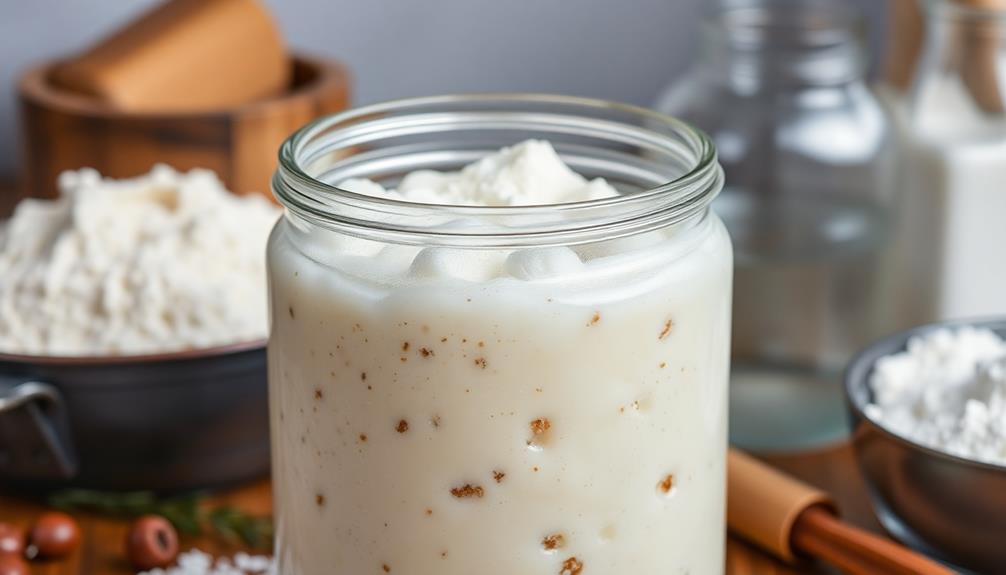
Many home bakers mightn't realize that proper care of a sourdough starter is crucial for both health and safety. When you're nurturing your starter, it's important to keep an eye on its smell. A pleasant, tangy aroma is a sign of healthy fermentation. However, if you detect a foul odor or anything resembling rotten eggs, it's a red flag. This could mean harmful bacteria are taking over, and you should toss that starter out.
Also, always wash your hands before handling your starter. You wouldn't want to introduce unwanted germs, right? When feeding your starter, use clean utensils and containers, too. This helps prevent contamination.
If you see any mold on the surface, it's best to discard the entire starter, as mold can produce toxins that aren't safe to consume.
Lastly, while wild yeasts and bacteria in sourdough can be beneficial, make sure you're storing your starter in a cool place, away from direct sunlight. Keeping it in the fridge helps slow down fermentation, making it safer.
Final Thoughts
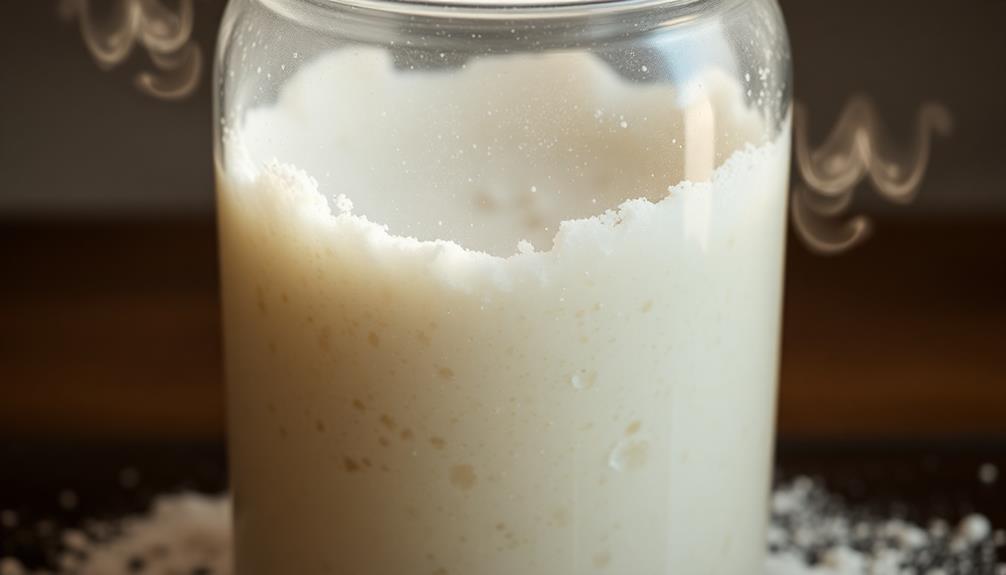
Properly caring for your sourdough starter is key to enjoying successful baking experiences. When you keep your starter healthy, it not only smells great but also helps your bread rise to perfection.
Remember, a sourdough starter should have a tangy aroma, reminiscent of yogurt or beer. If it starts to smell off, it might be time to reassess your feeding routine or check for contaminants.
Regular feeding, proper storage, and a watchful eye on its texture can transform your starter into a bubbly powerhouse. Don't be afraid to experiment a little! Each starter has its own personality, and discovering those unique scents can be part of the fun.
Just think of it like getting to know a quirky friend who sometimes misbehaves but has a lot to offer.
As you dive deeper into the world of sourdough, remember that every loaf tells a story. By nurturing your starter, you're not just baking; you're creating a delicious masterpiece.
Frequently Asked Questions
Can Sourdough Starter Smell Change Over Time?
Yes, sourdough starter's smell can change over time. As it ferments, you'll notice variations influenced by factors like temperature, feeding schedule, and ingredients. Regular maintenance helps keep its aroma pleasant and consistent.
What Should I Do if My Starter Smells Bad?
If your starter smells bad, it's best to discard it. Check for mold or unusual colors. Consider feeding it more frequently, or starting fresh with a new batch to ensure healthy fermentation and good flavor.
How Can I Tell if My Starter Is Healthy by Smell?
To determine if your starter's healthy, trust your nose. It should smell pleasantly fruity or slightly tangy. If you detect a strong, off-putting odor, it might indicate a problem that needs addressing.
Does the Smell of Sourdough Starter Vary by Region?
Yes, the smell of sourdough starter can vary by region due to different local flours, wild yeast populations, and fermentation conditions. You might notice distinct aromas reflecting your area's unique environment and microbial ecosystem.
Can I Use a Sourdough Starter With a Strong Odor?
If your sourdough starter has a strong odor, it's best to assess its overall condition first. If it's bubbly and rising, you're likely fine. However, a foul smell could indicate spoilage, so use caution.

